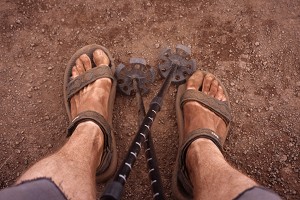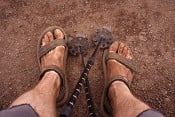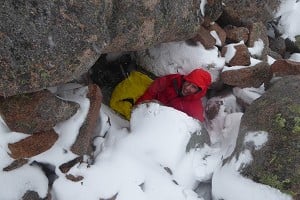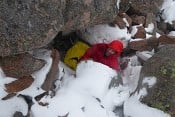
Naismith's Rule is a formula that can be used when planning a hill route to work out - roughly - how long it ought to take. Devised in 1892 by the Victorian mountaineer William Naismith, this well known rule of thumb remains in common use today with only minor revisions. Naismith clearly knew a thing or two about walking in the hills. Here's how to use his rule (hint: with a pinch of salt).
The basic rule allows:
- One hour for every 5km walked on the flat
- Plus one hour per 600m ascent (which conveniently breaks down to 10mins per 100m)
So a walk of 7.5km with 200m ascent would be 1hr30mins for the distance, plus 20mins for the ascent = 1hr50mins
Sound simple? Well sadly in practice it does tend to prove too simple to be true.
First off it should be noted that these are ideal on-paper timings, and that your actual on-the-ground time is likely to be subject to real world delays, factors that you need to make some attempt to account for when plotting each leg of your journey. Naismith's Rule assumes that you are reasonably fit, walking on easy terrain, and not subject to adverse weather. It takes no heed of the slowing influence of heavy loads, fatigue, rest stops, delays caused by tricky navigation - in poor visibility perhaps, adverse weather such as a strong headwind, or the ground underfoot.
Add bogs, scree, undergrowth, snow, steep gradients (both going up and going down), a heavy pack, some basic scrambling, a crosswind, a group of mixed abilities, and the obligatory photo stops to the mix and your confident Naismith timings are likely to look a little ambitious.
Stretched over a long hilly day that tireless 5km per hour is quite some pace, and unless you are a hill runner it is very much the minimum time, not the average!
In practise then, Naismith's Rule should be treated just as the starting point - albeit a very useful one - for working out your timings.
Later revisions to the rule have been made in order to account for some of the variables. For instance many walkers find they get on well the tweaks made by Eric Langmuir, author of the classic manual Mountaincraft and Leadership:
- Reduce the basic speed to 4km per hour
- On gentle descents between 5-12 degrees subtract 10mins per 300m of height loss (you'll be trotting downhill fast)
- On steeper descents of 12 degrees and more add 10mins per 300m of height loss (you'll be picking your way slowly)
Every walk is different, and so is every walker. But by starting with Naismiths Rule as a basis you should with experience be able to work out your own rough averages. Personally I tend to favour simplicity, and have found that an average of 4km per hour, irrespective of incline and terrain, does me reasonably well. Except, that is, when it doesn't. Why not go out and try for yourself?
- REVIEW: Trekmates Ankle Gaiters 23 Apr
- INTERVIEW: Exmoor Coast Traverse - England's Best Kept Mountaineering Secret 10 Apr
- REVIEW: Rab Muon 50L Pack 9 Apr
- REVIEW: Boreal Saurus 2.0 22 Mar
- REVIEW: The Cairngorms & North-East Scotland 1 Mar
- REVIEW: Mountain Equipment Switch Pro Hooded Jacket and Switch Trousers 19 Feb
- Classic Winter - East Ridge of Beinn a' Chaorainn 12 Feb
- REVIEW: Salewa Ortles Ascent Mid GTX Boots 18 Jan
- REVIEW: Patagonia Super Free Alpine Jacket 7 Jan
- REVIEW: Deuter Fox - A Proper Trekking Pack For Kids 27 Dec, 2023













Comments